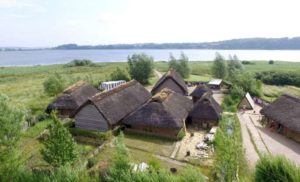WORLD TOURISM: UNESCO’s Newest World Heritage Sites – Photos 11/20 -15/20
11/20 SLIDES © Photograph by Hemis, Alamy Stock Photo
Hidden Christian Sites in the Nagasaki Region
On the Japanese island of Kyushu, more than a dozen sites built between the 16th and 19th centuries reveal the earliest Christian missionaries and settlers in the country. These early Christians practiced their faith in secrecy because of religious prohibitions from the 17th to 19th centuries.
.

12/20 SLIDES © Photograph by Arnold Paira, Redux
Sassanid Archaeological Landscape
Southeast of Iran’s Fars Province, the fortified buildings and palaces of Firuzabad, Bishapur, and Sarvestan illuminate the architectural and artistic styles of the Sassanian Empire between 224 and 658 C.E.
.

13/20 SLIDES © Photograph by Brian Overcast, Alamy
Tehuacán-Cuicatlán Valley
Cacti forests, agaves, yuccas, and oaks blanket the Tehuacán-Cuicatlán Valley in Mexico’s Mesoamerican region. In addition to its biodiversity, archeological remains provide evidence of early technological advancements and crop domestication.
.

14/20 SLIDES © Photograph by Fausto Giaccone, Redux
Ancient City of Qalhat
On the eastern coast of Oman, the archaeological remains of this walled city reveal a major trading port between Arabia, East Africa, India, China, and Southeast Asia from the 11th to 15th centuries C.E.
.

15/20 SLIDES © Photograph by Picture Alliance, Getty Images
Hedeby and the Danevirke
Dating to the first and second millennia C.E., Germany’s archaeological site of Hedeby was a major trading center between Europe and Scandinavia. Its roads, buildings, fortifications, and cemeteries provide insight into Europe during the Viking Age.
.
 All photographs, news, editorials, opinions, information, data, others have been taken from the Internet ..aseanews.net | [email protected] | For comments, Email to : Icarus d’ Greek | [email protected] | – Contributor
All photographs, news, editorials, opinions, information, data, others have been taken from the Internet ..aseanews.net | [email protected] | For comments, Email to : Icarus d’ Greek | [email protected] | – Contributor









